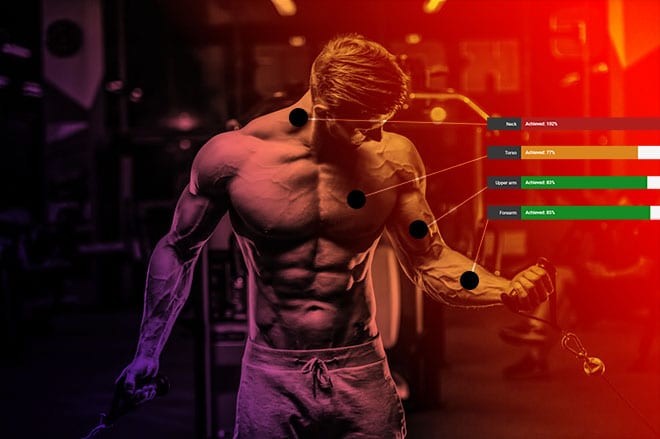FFMI Calculator: calculate your genetic muscular potential

Calculate your own natural potential or find out if someone is “natty or not”
What level of muscularity can you achieve as a natural lifter? This calculator will give you an estimation of your maximum natural potential in contest shape based on Casey Butt’s research on elite natural bodybuilders and multiple scientific publications on the fat-free mass index (FFMI). This calculator will not be accurate if you’re not six-pack lean.
The calculator will also tell you the relative development of your body parts for men, but for women sufficient data are only available for whole-body estimates. You’ll need a measurement tape to use the calculator.
Need help with measurement conversions?
Methodology
The calculation of men’s maximum muscular potential is based on Casey Butt’s extensive research published in his book Your Muscular Potential. People familiar with this work may notice this calculator gives different, generally lower, estimates than the other calculators you can find online, including on Casey Butt’s own website. That’s because they’re based only on his first research that’s available online for free. Those older formulas were based on a smaller sample size of individuals with almost exclusively top tier genetics.
Moreover, the formulas were probably overfitted to the data, as the calculation for maximum arm size included not just wrist size but also ankle size, for example, which of course doesn’t make much sense.
The 4th edition of his work published a larger sample size with better-generalized formulas. These formulas are likely to be more accurate for the average person.
Although the formulas correct for body fat percentage, since fat-free mass scales considerably with body fat percentage, these estimates are only accurate for men in the body fat range of 4-12%. Fatter individuals may be able to achieve greater levels of muscularity.
To calculate the probability of achieving a certain physique naturally, we reviewed all publications on high level bodybuilders and the fat-free mass index to find individuals that were A) likely natural because they were drug tested during the study period and B) likely near their genetic maximum muscular potential based on extensive training experience and high-level placings at physique sports. In other words, we looked for natural bodybuilders at their natty max. The best publications were Kouri et al. (1995), Mäestu et al. (2010) and Chappell et al. (2018).
From these data sets, we calculate the weighted average fat-free mass index (FFMI) and its standard deviation to estimate the population’s normal distribution for maximum muscularity. The FFMI values were height-adjusted based on Kouri et al. (1995) to account for the fact human mass scales in 3 dimensions with height. To estimate the true standard deviation, we corrected for the measurement errors from body composition measurements in bodybuilders measured by Lichtenbelt et al. (2004) using the bias correction method of Trafimow (2014).
This allows us to limit the range of what’s naturally achievable to that of genetic variation and not measurement error.
With the estimates of the population’s mean, normalized, natural, maximum fat-free mass index and its true standard deviation, we can calculate the percentage of the population that can achieve a certain level of muscularity naturally.
For the ladies, only Chappell et al. (2018) provided good data to estimate the maximum muscular potential of women. They estimated that the maximum fat-free mass index of women was likely 20, 80% of that of men. This estimate is surprisingly plausible. In one of the most popular articles, I showed that men and women can gain muscle at the same relative rate. Based on a large data set by Schutz et al. (2002) in Nature, untrained women have an average FFMI of 15.4 compared to 18.9 for men, a ratio of 0.81.
This ratio remains relatively constant in various strength sports (Santos et al. 2014, Healy et al. 2014). On average in all data sets with the untrained individuals, the physique athletes, gymnasts, athletics and top tier athletes of all sports combined, the ratio is again 0.81. With this estimate, I calculated a gender-normalized FFMI, which allows us to estimate the percentage probability a woman’s physique can be attained naturally based on the same standards as that of men.
 Want more content like this?
Want more content like this?
Then get our free mini-course on muscle building, fat loss and strength.
By filling in your details you consent with our privacy policy and the way we handle your personal data.
